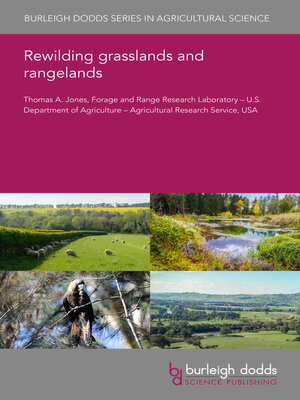Rewilding grasslands and rangelands
ebook ∣ Burleigh Dodds Series in Agricultural Science
By Professor Thomas A. Jones

Sign up to save your library
With an OverDrive account, you can save your favorite libraries for at-a-glance information about availability. Find out more about OverDrive accounts.
Find this title in Libby, the library reading app by OverDrive.



Search for a digital library with this title
Title found at these libraries:
| Library Name | Distance |
|---|---|
| Loading... |
Grasslands and rangelands are disturbance-driven ecosystems that cover 40% of the Earth's land area. They have often been subjected to agricultural improvement or environmental degradation, compromising biodiversity, thus restoration may require nutrient reductions and native seedings. If a seed source is intact and degradation is recent, rewilding (passive restoration) may restore biodiversity. Otherwise, active restoration may be required via the application of 'green hay' or direct seeding. Invasive species may be controlled by scalping, herbicides, mowing, biological soil crusts, or prescribed burning, but eradication may be impractical. Though forbs are more difficult to establish than grasses, they are potentially greater contributors to species richness. Stronger native seed industries are needed to provide biodiversity for restoration. Long-term monitoring of vegetation or seed banks is required to gauge restoration success. A broadscale case study from Utah, USA is provided to illustrate many of these principles.







